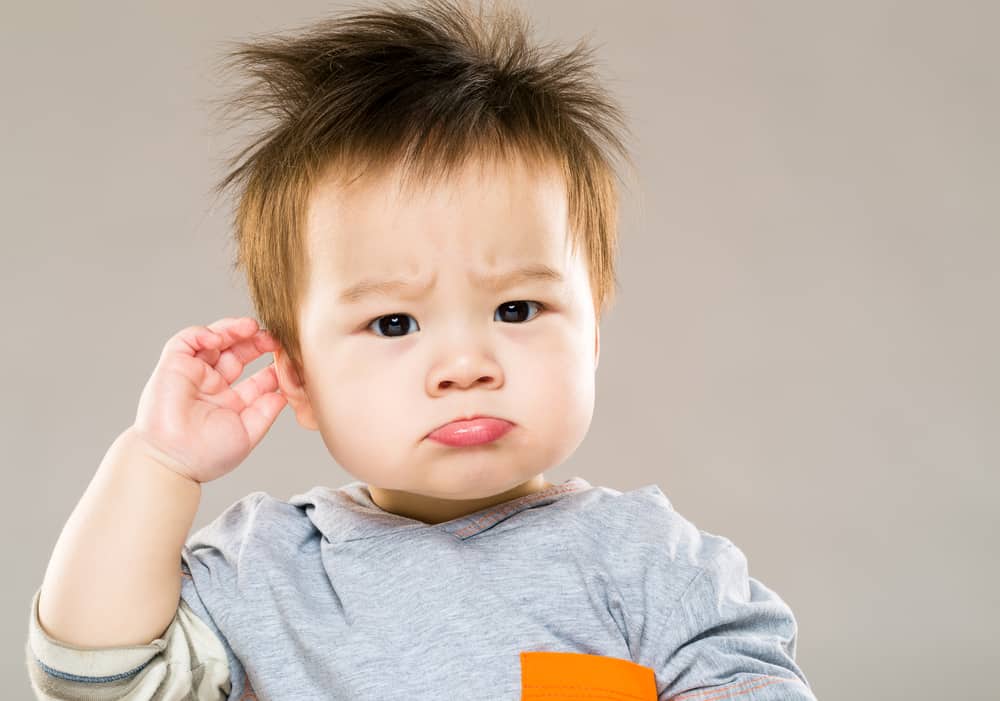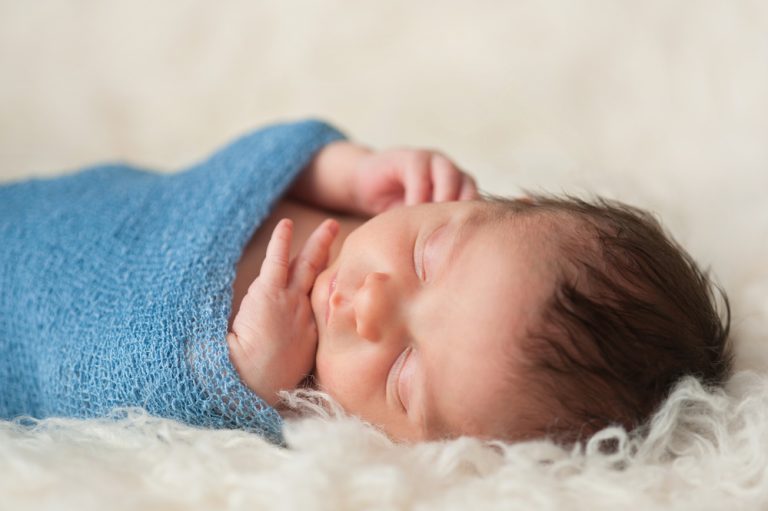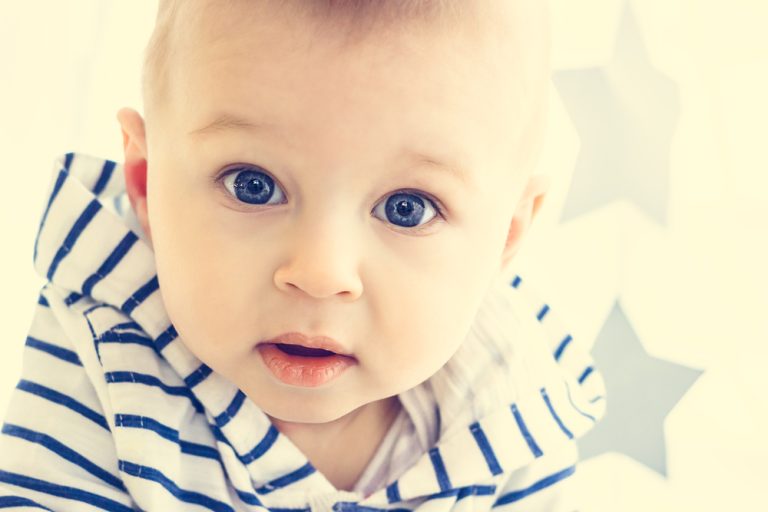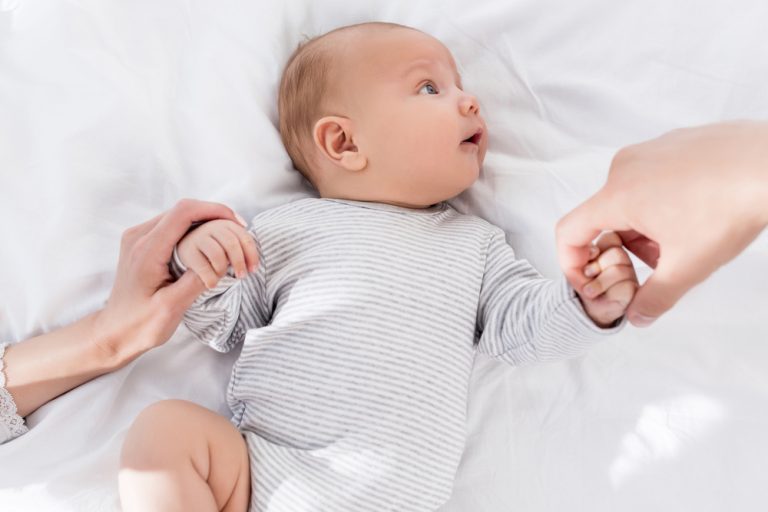Many parents are surprised to find their baby has a distinct lack of eyebrows and eyelashes at birth, but this occurrence only lasts for a few weeks.
Babies grow their eyebrows and eyelashes around two to three months, as their hair becomes thicker and fuller. It is important to note some babies who are born with thicker, darker hair may already have eyebrows at birth.
This article will give you more information for parents curious about what to expect as their baby grows eyebrows and eyelashes.
In this article, you will learn:
- When eyebrow development begins
- Why babies’ eyebrows are so light at birth
- When eyebrows become visible
- What to do if your baby’s eyebrows fall out
- If there are any ways to encourage eyebrow growth
- If a baby’s eyebrows can change color
- Factors determining eyebrow prominence
- If a baby’s eyebrows appear red
- If it’s safe to draw eyebrows on your baby
When does eyebrow development begin?
Babies begin developing eyebrows around twenty-two weeks of gestation as their hair follicles start the maturation process. While in the utero, all babies’ hair is non-pigmented, regardless of ethnicity; as they continue to develop, it may darken and thicken or remain thin and light.
Although they may be challenging to see, it’s extremely rare for a baby to be complete without eyebrows or eyelashes at all at birth.
Why are babies eyebrows so light at birth?
There are several reasons that cause a newborn’s eyebrows and eyelashes to appear so light at birth. These include:
- Length of gestation (premature birth, on time, or a late delivery)
- The baby’s ethnicity
- Genetics from the parents, including hair thickness and color
When do eyebrows become visible?
Babies’ eyebrows become visible around the two-month mark but will continue to darken over time. If your baby has extremely thin, light hair, it may take longer for their eyelashes and eyebrows to show, but most appear no later than four months.
What to do if your baby’s eyebrows fall out
It’s very common for babies to lose their hair after birth, and their eyebrows and eyelashes are no exception. Babies often experience cradle cap or seborrhea dermatitis, a skin condition causing a rash or scaling along the scalp. This condition is due to excess glands which produce too much oil.
While cradle cap commonly affects the scalp, it may spread to other areas, including the eyebrows, causing them to fall out temporarily. While unpleasant, cradle cap is not a serious condition, and there are many at-home treatment options that will clear your baby’s skin, allowing their hair and eyebrows to regrow.
Are there any ways to encourage eyebrow growth?
While there are no medical treatments to grow a baby’s eyebrows, parents have found several at-home remedies that may encourage growth. It’s important to note that a baby’s skin is very sensitive, and you should never begin any treatments without consulting your pediatrician.
Aloe Vera – Fresh, pure Aloe Vera can encourage hair growth and help heal and restore a baby’s skin. By applying the pulp from the Aloe plant and allowing it to sit on the eyebrow for around half an hour, you can enhance the existing hair and encourage new growth.
You must never use commercial Aloe as it often contains chemical ingredients that can harm your baby. Instead, use the pulp from a plant without pesticide or chemical treatments.
Coconut Oil – Coconut oil is beneficial to sensitive skin and is considered to have hair growth capabilities. Massage a small amount into your baby’s eyebrows, following the hair pattern, for best results. Always use organic, virgin, and food-grade coconut oils to ensure the safety of the ingredients.
Be Patient – The best option for hair growth is patience, allowing your baby’s eyebrows and eyelashes to develop over time. As long as they’re receiving a healthy diet and getting plenty of sleep, your baby will begin developing eyebrows around three months of age.
Can a baby’s eyebrows change color?
As your baby ages, its hair will continue to thicken, and it’s not uncommon for its eyebrows and eyelashes to change color. They will most likely go through a few different hair shades before their final color is revealed, with many babies starting with black hair and ending on blonde or vice versa!
Many factors determine a baby’s eyebrow prominence, including:
- Gestation length
- Parental genetics
- Amount of hair at birth
- Hair Color
Can A Baby’s Eyebrows Appear Red?
Yes, there are times when you may find your baby’s eyebrows appear red. This occurrence is generally due to sleepiness, but it may also appear regardless of mood. Many babies may have the red hair gene MC1R, which makes them have red hair on specific body parts and not others.
Is it safe to draw eyebrows on my baby?
If you find you don’t want to wait for your baby’s eyebrows to grow naturally, you may wonder if it’s ok to draw them on. This trend is becoming quite popular, especially on social media, and is generally harmless. However, if you choose to draw eyebrows on your little one, always use an FDA-approved, non-toxic eyebrow pencil created for sensitive skin.
Under no circumstances should you ever use a marker, Sharpie, paint, or other material on your baby.
Babies born with light eyebrows and eyelashes will develop darker hairs around two to three months of age. While there are unproven at-home remedies to encourage hair growth, the best course of action is patience and waiting for nature to take its course.
Many factors determine the color and thickness of your baby’s eyebrows, including genetics and gestational length. Still, regardless of how they appear at birth, your little one will most likely have beautiful full eyebrows before you know it.




